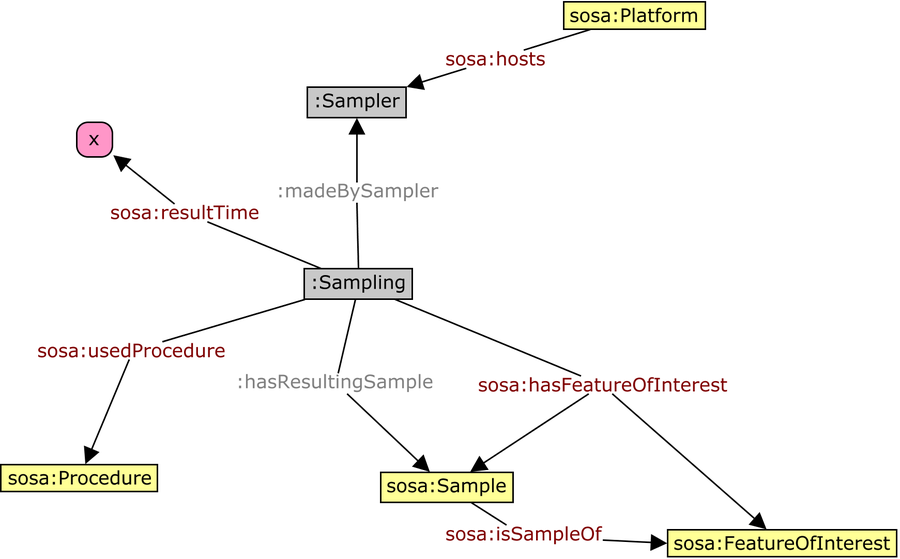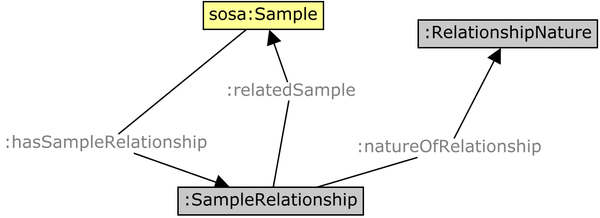Warning:
This wiki has been archived and is now read-only.
Sampling
Contents
Samples and Sampling in SOSA
Requirements
The requirements for sampling are described at
The basic requirement 5.16 is satisfied by the class sosa:Sample and the property sosa:isSampleOf which relates a sample to the ultimate feature of interest.
The extended requirements 5.38 are addressed by the Sampling Activity and Sampling Relationship models described here.
Sampling Activity
This page documents an extension to SOSA, which would bring the treatment of Samples and Sampling up to a comparable state to the proposal for Actuation by Jano.
The are two additional classes
- :Sampler
- :Sampling
and four properties (two inverse pairs)
- :hasResultingSample <--> :isSamplingResultOf
- :madeSampling <--> :madeBySampler
These are shown in grey in the image below.
A Sampling includes both sample creation/retrieval, and sample processing. In both cases the output is a new sample. The immediate input may be the original feature-of-interest, or may be an existing sample.
- For sake of simplicity, this concept map does not show inverse properties although they are given names above.
- Please keep in mind that everything in yellow is already part of SOSA.
Sample might also be a subclass-of FeatureOfInterest. If subclassing is not included in SOSA then the axiom can be added in the SSN layer.
Sample relationships
Two additional classes support the description of general relationships between samples:
- :SampleRelationship
- :RelationshipsNature
together with three properties:
- :hasSampleRelationship
- :natureOfRelationship
- :relatedSample
This follows the Qualified Relation pattern.
Samples are often related to other samples, by sub-sampling, topological relationships (stations along a traverse, pixels within an image, probe spots on a polished section, specimens retrieved withina borehole) or as parts of sample processing chains (crushing, splitting, dissecting, disolving). There are an essentially unlimited set of relationships between samples, so the nature of the relationship has its own class. .
An ontology graph for this is available [[1]]
Issues
The SamplingActivity graph generally follows the pattern of sensing/observation and actuation (compare the graph above with proposal for Actuation, which follow the general process/workflow model expemplified in PROV-O. The following variations are notable:
- sosa:hasResult/sosa:Result is replaced by :hasResultingSample/sosa:Sample
- :sampledBy is parallel to sosa:invokedBy
- I've lost track of whether there is a comparable SSN property directly linking an Observation/Sensing event to the sensor used
- the range of sosa:hasFeatureOfInterest allows either sosa:FeatureOfInterest or sosa:Sample
- a sampling activity might be re-processing an existing sample
- however, it should be emphasized that the sosa:isSampleOf should point to the ultimate feature of interest which the sample is intended to characterize, not an intermediate sample which is just part of a sample preparation chain
- Question: should there be a property that explicitly links a Sample to it immediate predecessor, or do we just rely on the property chain :isSamplingResultOf/sosa:hasFeatureOfInterest ?
- note that this does in fact match the rangeIncludes definition on sosa:hasFeatureOfInterest
- a sampling activity might be re-processing an existing sample

